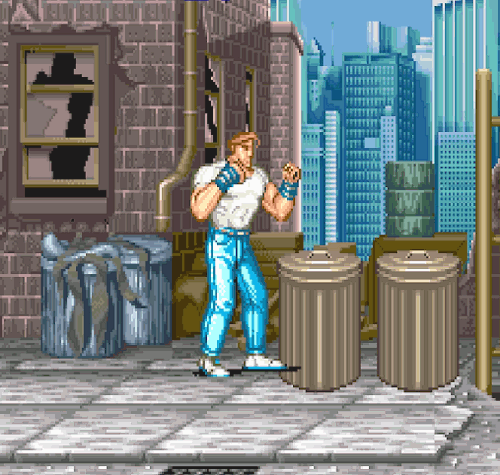Just in case you weren't being rhetorical, I thought I'd offer answers to some of your questions.
I laid out a few examples of how main stories, hero stories, and showdown stories (from the Aftershock expansion) are ordered here. I hope this helps clear things up - if not, let me know and I can offer more details.
From Page 16: "After standard setup, each fighter that chose an ally to include in the game places that ally’s card in their fighter play area and places its corresponding token in an empty space adjacent to their fighter. Similarly, each fighter that chose a rival to include in the game places that rival’s card in their threat area and places its corresponding token in an empty space adjacent to the boss start space."
These are homages to pickups in the sidescolling beat-em up video games that Street Masters was inspired by.
![]()
If these are questions you're interested in, there is the Street Masters compendium that has lore on each and every enemy in the game (so far). The overview cards in the Aftershock expansion also have a small amount of lore for each fighter/enemy/stage. You can also find out some lore by playing through a fighter's story.
It's also worth noting here once again that Street Masters draws lots of inspiration and/or makes lots of homages to the beat-em-up/fighting video games of the '90s. Specifically, Lucille of the Cartel is an homage to Poison from Final Fight/Street Fighter (as well as to an infamous baseball bat from The Walking Dead series).
wrdawes wrote:
1. Vague campaign rules. I think since the rules are so simple with few exceptions, some things aren't explained thoroughly, or at all. In particular, the story/campaign elements. It took me several reads and a few guesses to figure out how heroes' personal quests work in conjunction with campaigns.
Allies and rivals are barely explained at all. Where do they start during a scenario?
From Page 16: "After standard setup, each fighter that chose an ally to include in the game places that ally’s card in their fighter play area and places its corresponding token in an empty space adjacent to their fighter. Similarly, each fighter that chose a rival to include in the game places that rival’s card in their threat area and places its corresponding token in an empty space adjacent to the boss start space."
3. Silly loot. Sneakers? Energy drinks? A cooked turkey? A martial arts magazine? Then again, this keeps the focus on the characters and their powers, rather than hoping to find a rare but powerful item that will win the scenario.

4. No context. There is no background material on the characters, and very little on the bad guys. Some of it comes up on hero stories, but not much. I have so many questions, though! Why do Kyoryu and Megan wear the same trousers? Why are unarmed martial artists taking on a heavily-armed Russian soldier, and why does said Russian soldier think it's a good idea to fire an RPG indoors? Why does a group called "The Brotherhood" have females? What the heck is Kemono? Why does The Cartel employ enforcers who look like American strippers doing police officer cosplay?
It's also worth noting here once again that Street Masters draws lots of inspiration and/or makes lots of homages to the beat-em-up/fighting video games of the '90s. Specifically, Lucille of the Cartel is an homage to Poison from Final Fight/Street Fighter (as well as to an infamous baseball bat from The Walking Dead series).